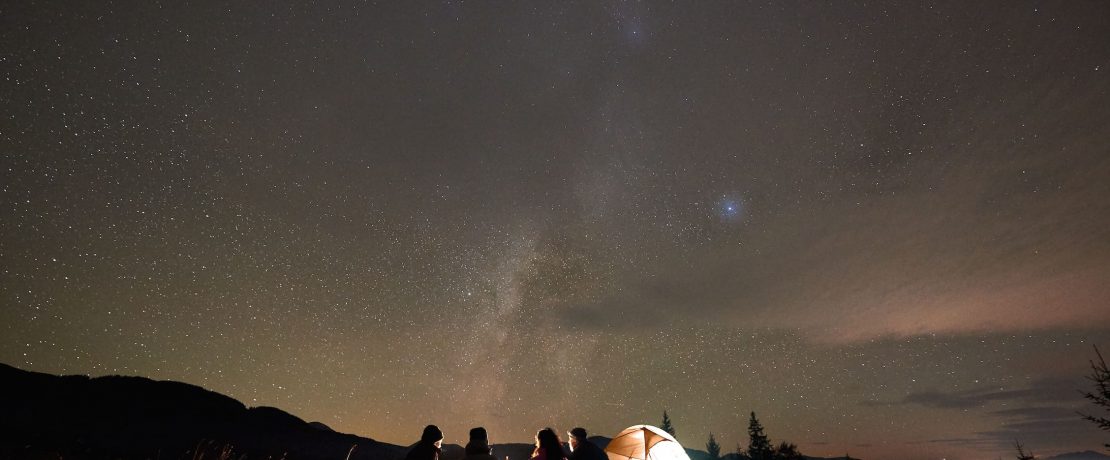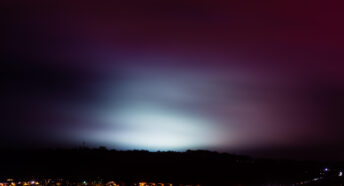Why we’re working to restore night skies
CPRE has been a leading national voice in championing dark skies for many years. Here’s why we believe it matters so much.
Artificial light doesn’t respect boundaries. It can spread for miles, bleeding out from built-up areas and into the skies over our countryside.
This is why we care about this issue; inky, star-strewn skies are one of the things that make our countryside so special. We’re working to restore and protect truly dark night skies – not just for us, but for wildlife that so depend on it.
Rewilding the night
There is increasing awareness of the impact that light pollution can have on wildlife, by interrupting natural rhythms including migration, reproduction and feeding patterns. Man-made light is known to cause confusion to migrating birds, often with fatal outcomes, and many of us will have heard birds singing late into the night in trees lit by a streetlight.
Research has suggested that moths, which play an important role in pollinating flowers during their nocturnal activity and have declined in abundance by 40%, might have been disrupted by light pollution – but that this can be alleviated by the use of lower energy lighting or part-time night lighting.
Buglife state that two-thirds of invertebrates are partially or wholly nocturnal, and even diurnal species can be impacted by the loss of their night. The situation is so serious that light pollution is reducing the nocturnal pollinator visits to flowers by 62% in some areas. Some mammals emerge too early from hibernation as a result of light pollution, and others will try to avoid the light altogether, which disrupts their natural activities such as mating and hunting.
It’s not just wildlife communities that are impacted either. Artificial light, even in LED, contains high concentrations of blue light. This disturbs our circadian rhythms and can disrupt our sleep cycles. It’s one of the reasons why modern smartphones now have ‘blue light filters’.
To reduce the impacts of light pollution on wildlife and humans we must protect and rewild the night sky at the same time as the land.
On carbon and costs
We make sure that everything we do is informed by the climate emergency, which gives us another reason to take a look at the light emitted by our roads and buildings.
Lighting accounts for a significant amount of some council’s emissions in the UK. For example, in Cornwall, street lighting alone accounts for 30% of the council’s emissions. Despite the steady move towards LED, lighting is responsible for 5% of global emissions. That’s more than a billion tons of CO2 emissions per year. The more this can be reduced, the better for the environment.
Happily, we have a great track record in our work campaigning for dark skies. Since the 1990s we’ve campaigned for policies to reduce light pollution, partnering with others such as the British Astronomical Association, and in 2012 a national planning policy to control lighting was introduced. It confirmed all the reasons we know dark skies are important, including limiting impacts on ‘intrinsically dark landscapes and nature conservation’. This point about nature is, we think, an essential one.
It’s not just the climate that suffering the impacts of lighting emissions. It hits our bank balances too. According to the Energy Saving Trust, lighting accounts for 11% of the average household electricity bill, so by only using the lights we need, we can save money too.
Gathering data
We’re making sure we gather lots of facts and figures so that we can keep making a case for the value of starlit skies. We’ve surveyed 83 councils across England to learn more about their approaches to lighting and gave recommendations about how they can do even more.
We’ve also made maps showing areas where the darkest and brightest skies are – why not explore them now on our Night Blight website? We’ve made these freely available and searchable so you can check out your local area and explore the places where you’ll have the best chance of star-spotting.
And each year we run a Star Count – our citizen science project to see how many stars people can see in the Orion constellation. This helps us gather national data and track where light pollution is on the rise.
Lighting is of course needed, and we’re advocating for it to be thoughtfully used in the right places and when it’s called for. Our research helps to guide these decisions, and we’re proud of that.
What we want to see
We believe that the remarkable tranquillity that comes with clear, velvety skies speckled with stars is something really special, and we want to make sure that everyone can experience this.
However, the night sky is becoming increasingly obscured by artificial light. Sadly, this means most people in the UK can’t see many stars at all, especially if they live near a big town or city. Yet, it is a form of pollution that is allowed to increase year on year without any significant effort being made to control the damage it is causing to people, nature and the environment. We think it’s time to rewild the night and help people reconnect to such a vital part of our heritage.
That’s why CPRE is calling for stronger national and local policy to combat light pollution in the countryside and urban areas. We must help to ‘rewild the night sky’ and protect and enhance this vital natural resource for the benefit of current and future generations. This can be achieved through strengthened national and local planning policy to ensure we get well-designed lighting that is only used when and where it is needed.





